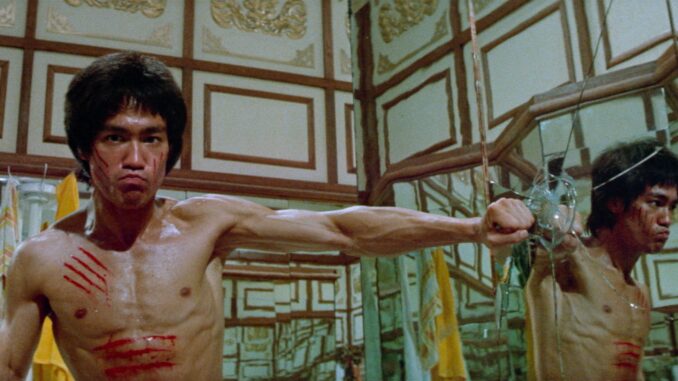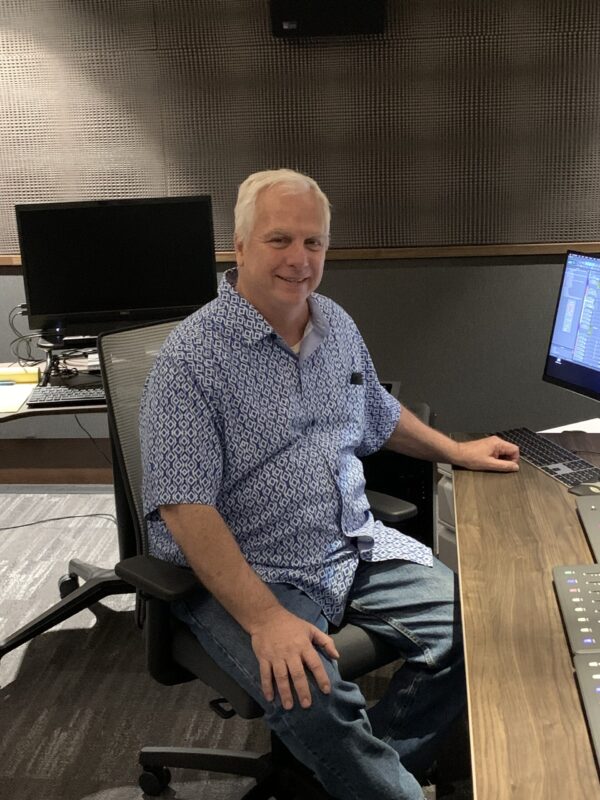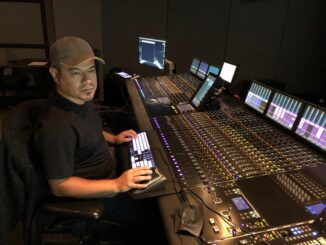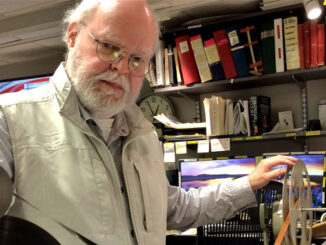
By Mel Lambert
With Dolby Atmos immersive playback now available in an increasing number of consumer environments, is it any wonder that major studios and media stakeholders are including immersive material on anniversary re-issues?
At Warner Bros. Discovery, the decision was made early to include a Dolby Atmos soundtrack on the 50th anniversary 4K Ultra HD release of “Enter The Dragon,” the R-rated martial-arts film directed in 1973 by Robert Clouse and starring the enigmatic actor Bruce Lee. To develop the new Atmos soundtrack in two versions for scheduled release on August 8 – the original, domestic release in English, and a longer version released in Asia by the production company Golden Harvest that was fully dubbed in Mandarin – industry veteran Doug Mountain was given free rein to use contemporary restoration and remastering tools. “Enter the Dragon” is considered by many to be one of the most influential action films of all time and is often credited with bringing interest in the Asian martial-arts genre to mainstream Western cinema.
“Because the remastered film would be shown at showcase presentations following release of the Blu-Ray Disc and streaming versions [via Amazon Prime, AppleTV, Google Play and Vudu],” Mountain said, “I was tasked to prepare two, complementary Atmos soundtracks of both versions. The Near-Field or consumer release would feature a 7.4.1-channel Atmos format to suit home playback, while the Theatrical release is open-format” with the cinema processor capable of outputting as many loudspeaker channels as the environment supports.
A seasoned supervising sound editor/re-recording mixer, Mountain has spent several years developing a high-tech methodology for restoring and up-mixing classic feature films, including director Antoine Fuqua’s “Training Day,” “Superman” (4K Box Set), “National Lampoon’s Vacation,” “You’ve Got Mail,” “Rebel Without a Cause,” “East of Eden,” “Cool Hand Luke,” “Rio Bravo” and “The Maltese Falcon.” He is also considered to be one of the leading dialog editors and specializes in Dialog Cleanup of production sound; credits include “Community” (NBC), “Walking Dead,” “All American,” “Animal Kingdom” and “Catch-22,” for which he received an Emmy nomination. Mountain also served as a consulting engineer for NARAS, handling sound design and engineering for the annual Grammys Awards.
Described as “the ultimate in martial arts adventure,” “Enter the Dragon” follows a teacher of Shaolin martial arts travelling to an island fortress to spy on an opium lord – who is also a former monk from his temple – under the guise of attending a fighting tournament. Lee’s character is recruited to investigate a tournament at the temple, with two former army buddies played by John Saxon and Jim Kelly. “The goal was to bring the movie back to life with an immersive soundtrack,” Mountain said.

Mountain started the remastering project within a 5.1-channel edit suite on Warner Bros.’ Burbank lot. Here he auditioned and assembled the restored sound elements derived from original mono tracks and 5.1-channel stems created back in 1997 at Warner Hollywood for the film’s first DVD release. These and other elements eventually occupied some 50 Avid Pro Tools tracks.
“My task was to build a Theatrical Atmos soundtrack for cinematic performances with up to 128 channels and objects,” he said, “together with a Near Field render for 7.4.1 Blu-Ray Disc and streaming. Once the basics had been assembled, I moved to my new hybrid room: Stage 122 in Building 141,” formerly the Warner Records Building. The new room, which features an 11-foot ceiling to accommodate overhead channels and laser projection, was designed by WB’s Tony Pilkington and the former vice president of engineering and technology, Kevin Collier.
Within Stage 122, Mountain had access to a dubbing console made up of three Avid S1 eight-fader control surfaces, a single DOCK touchscreen plus a tactile controller with soft keys; a pair or wraparound video monitors connect to the Pro Tools engines and a Sync X unit. Also available is a monitor control panel custom designed by WB’s engineering department and connected to an Avid MTRX system. Picture playback is via a 2K laser projector, with audio playback via a three-speaker Meyer Acheron system behind the screen and a pair of JBL Model 708 speakers mounted just outside the left and right screen edges for Near Field mixing. Surrounds and overheads are handled by Meyer loudspeakers. “I can select a Theatrical configuration using the Meyers behind the screen,” Mountain continued, “or, for Nearfield Mixes, replace the left and right screen speakers with the JBL monitors outside the screen. It is a very flexible, compatible arrangement.”
“The key to our success,” Mountain added, “was a discovery in the archives of composer Lalo Schifrin’s original score for ‘Enter the Dragon’ of pristine LCR mag recordings for every scene. I used Nugen’s Halo Upmix 3D plug-ins to extract the score into a 7.4.1 experience. Having laid the composite orchestral tracks into my 7.4.1-channel Atmos bed, I now had an anchor for the dialog, Foley and effects. I also used the iZotope’s RX10 app to isolate selected effects from the existing stems to create individual elements. These isolated Atmos Objects were then panned to the surround and overhead loudspeakers. The result came together remarkably quickly and sounds wonderful. But I tried to not stray too far from the original soundtrack; I worked closely with the Warner’s Miles DelHoyo while making creative decision so that we remained on the same page.”
The majority of the original film had been shot MOS in Hong Kong during the early 1970s with hardly any production sound.
“Dialog for most of these types of films was looped later in ADR,” Mountain explained. “Sync was also problematic with those looped lines. But we decided to retain the ‘feel’ of the film by only nudging ADR lines when it was very obvious that sync was out. I also removed ADR noise – paper rustles, pencils and the like – and cleaned up some older dialog edits to make them less noticeable. Surprisingly, the ADR ambiences were pretty good; we did not supplement them. The lack of production sound and location backgrounds was not a problem because we had elements from the original soundtrack; they also helped retain the way that we’ve come to appreciate ’70s martial-arts films, and not stray too far from the original.” iZotope RX removed noise and dropouts from tracks. “It was an invaluable tool,” the mixer said.
Mountain was determined to use only sound effects that had been recorded for the film. “Of course, we could have gone to town with enhancements,” he observed, “but that would also have been obvious against our ’70s recordings. We needed to remember that this iconic film has millions of fans around the world; it has lots of diehard fans. We also decided to leave the sound perspectives alone, to be true to the director’s original intent. In some cases we may have moved some of the effects around the room in the 3D spatial mix, in which case a hole from where the effect originated may need to have been filled with ambience. If necessary, I would add back some additional 3D reverb to the dialog to give the viewers a sense of space in larger enclosed sets.”
Asked for his best memory from the remastering project, Mountain said he is proud of the way in which Schifrin’s film score – specifically the complementary band and orchestral elements – “works so well in Atmos. Audiences can now hear them separately but blended into a unified style. Occasionally, I had to correct phase relationships between upper and lower channels/objects but, because I had a master template, it was pretty seamless. However, I did soon discover that ‘One Size Does Not Fit All!’ The Near Field Mix was monitored at a 79 dB reference, while the Theatrical Mix was mastered at 85 dB.
“They were satisfying mixes, with good low-end material yet without upsetting the overall balances,” Mountain concluded. “I think the fans will really like these versions,







Amazing project and reporting!